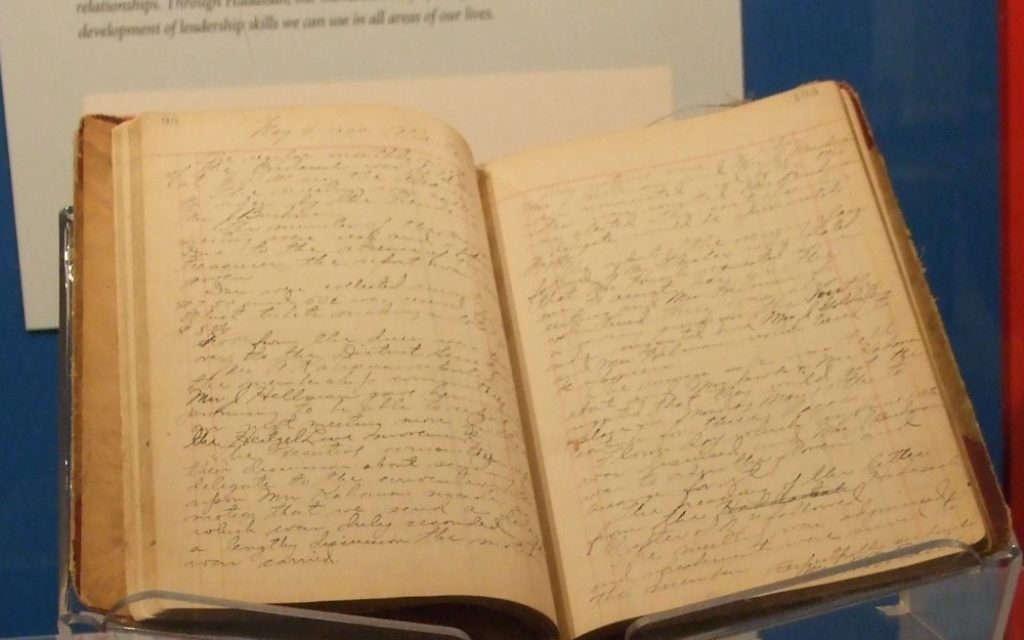18 Brave Women Put Their Necks Out
My profession is news, but my hobby and my college majors could be classified as olds (history and classics). Amid so much horrifying (terrorist massacres, ambushes of police) and terrifying news (anything from the national political conventions), I hope you’ll forgive me for peering into the past instead of the future.
This issue offers two chances to examine Atlanta’s unique slice of Jewish history: the forthcoming centennial of Hadassah’s Atlanta chapter and the opening of the Atlanta History Center’s “Gatheround” exhibit.
It’s coincidental that both are in one issue.
Get The AJT Newsletter by email and never miss our top stories Free Sign Up
Hadassah Greater Atlanta’s 100th anniversary isn’t until November, and we would have waited until just after the High Holidays in October to share the story of how 18 women gathered to launch a century of Zionist-inspired philanthropy if Hadassah hadn’t decided to bring its 98th annual National Convention here. But National Convention opens July 25, and you can read about the convention and Hadassah’s Atlanta century this week.
Meanwhile, “Gatheround” opened at the start of July, but the History Center had its media preview July 13, meaning that this is the first issue in which we could tell about the interactive exhibit and its extensive Jewish elements.
But what interests me isn’t the chance timing in 2016 but the moment seized by those chai women a century ago.
As the AJT extensively, authoritatively explored last summer — even if the American Jewish Press Association judges didn’t notice — the murder arrest and conviction of Leo Frank in 1913 and his lynching in Marietta in 1915 shattered Jewish Atlanta.
Even though the community didn’t shrink, it did retreat from civic leadership and the public spotlight. As the Breman Museum’s “18 Artifacts” exhibit has shown, Jewish Atlanta essentially hid inside a turtle shell to escape a rise in overt anti-Semitism, stayed there through U.S. involvement in World War I, the Roaring Twenties and the Great Depression, and didn’t come out until World War II.
But less than 15 months after Frank was hanged, and less than a week before the nation overwhelmingly re-elected Woodrow Wilson as president because of his promise to turn his back on the rest of the world, 18 women responded to the challenge offered by Hadassah’s founding in New York 4½ years earlier.
They looked beyond the threats to their own community from the likes of hatemongering newspaper publisher Tom Watson and the resurgent Klan and focused on the plight of their fellow Jews in Palestine, then a dusty, impoverished corner of the crumbling Ottoman Empire.
That took real bravery, including facing down possibly dismissive husbands.
Five months after Hadassah launched in Atlanta, the United States entered World War I, and Palestine was technically enemy territory, albeit an area destined to fall to the British by the end of the year. With our boys going over there to fight the Germans in Europe, those founding ladies must have faced intense pressure to stop paying monthly Hadassah dues and put aside their fundraising for the Jewish National Fund and the Jewish children’s milk fund.
Again, the Hadassah women refused to take the easy path and go along with the pressures of secular society and assimilation. Again, they showed bravery.
So I guess it’s no surprise that 100 years later their organization is thriving with more than 3,600 members and seems well positioned for another century of contributing to women’s rights, education and medical breakthroughs in Israel and worldwide.






comments